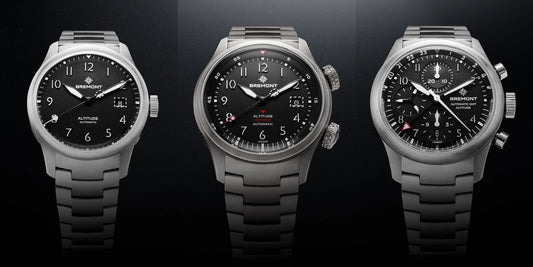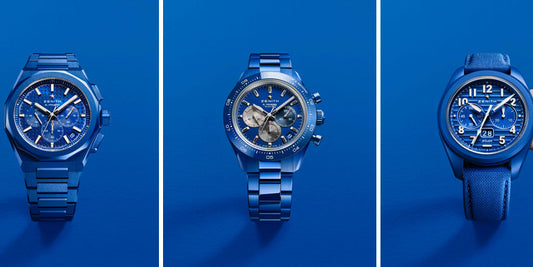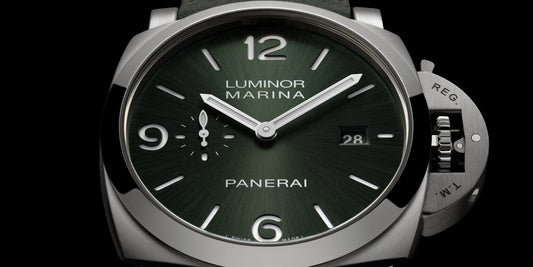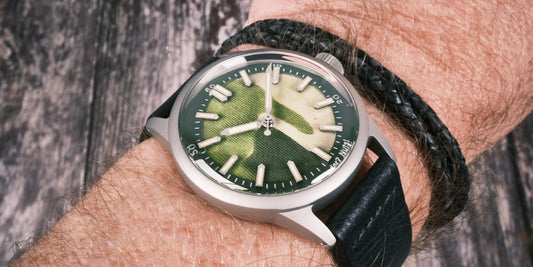It was 1968, the Vietnam war had been raging for 13 years, Martin Luther King had been assassinated and Apollo 8 Orbited the Moon. It was also the year I was born, gracing the earth alongside my twin brother Mark.
Fast forward to 2021, Meghan and Harry sat down for that chat with Oprah and the NASA Rover landed on Mars. The decision to commemorate my birth year led me on a quest for a watch from 1968—an emblem of the bygone era and of my beginning.
With a network of watch enthusiasts built over years in the industry, a Facebook acquaintance introduced me to ZRC. It was a brand I had never heard of before, however, I really liked what I saw and a decision was quickly made. Delving into the history, ZRC (Zuccolo Rochet Company) had been founded in Geneva in 1904 by Edmond Zuccolo and Joseph Rochet who were famous for pioneering the invention of the very first extendable watch strap.




ZRC Spatiale 300. Credit: @realwatchbrothers
- Regular price
- £88.00
- Regular price
-
- Sale price
- £88.00
- Unit price
- per

- Regular price
- £88.00
- Regular price
-
- Sale price
- £88.00
- Unit price
- per

The watch in question was the ZRC Spatiale 300, a limited-edition model released to celebrate the Apollo 8 Moon Orbit. Only 1000 units were produced, making them a rare find today. In fact, I know of only a small handful that I’ve seen since.
ZRC gained recognition not only for this model but also for collaborating with Jacques Cousteau and the French Navy, which resulted in the creation of a plethora of iconic watches. The ZRC Spatiale 300 clinched a bronze medal at the 1968 Besançon International Watch Fair— making it an undeniable commemorative choice for my birth year timepiece.
This is far from the average, run of the mill piece you might expect to see today. It has a 38mm x 50mm brushed stainless steel case without the crown. The slightly faded blue dial is protected by a domed plexi glass. The 12, 3, 6 & 9, together with the hour indices have faded to a lovely shade of pumpkin. The rectangular hands too match perfectly. The slightly faded and scratched bezel, showing years of use and wear, turns perfectly. It is powered by a 25-jewel mechanical self-winding PUW 1463 movement (Pforzheimer Uhren Werke). The date and crown are both at 4 o'clock and the day is at 9 o'clock. This is something quite unusual, unlike any other design choice that I’ve personally seen before.




ZRC Spatiale 300. Credit: @realwatchbrothers
Its water-resistance was originally guaranteed to a depth of 300 meters (although nowadays, I’d be worried if it was to even be splashed). This performance was also guaranteed thanks to a screw-down case back, which bears all the specifications as well as the patent and Edition number. The winding crown was simply tightened by pressure, although some models did feature a screw down version. It's secured to the wrist by a stainless steel 2-piece bracelet. The very simple attachment system makes it extremely comfortable on the wrist. Although it doesn’t look very comfortable, I can confirm that it is.
The ZRC Spatiale 300 encapsulates the essence of an era when innovation, exploration, and craftsmanship converged. Its scarcity, historical significance, and distinctive design make it a treasured piece that transcends the boundaries of time. The story woven into its brushed steel and faded blue dial narrates not only the Apollo 8 mission but also the ingenuity of ZRC and its collaboration with visionaries like Jacques Cousteau. In a world obsessed with the latest trends, this watch stands as a testament to the enduring fascination of vintage craftsmanship. Securing its place as the one watch I would never part with—a relic connecting me to the transformative year of 1968, the year I drew my first breath and my parents had wondered what on earth they had done to deserve twins.






















